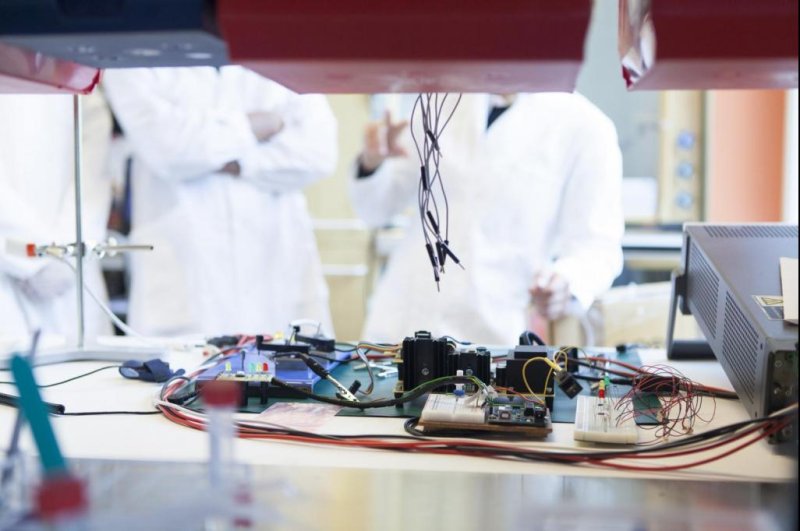Researchers tested the effects of silver nanoparticles and weak electric currents on dangerous microbes in the Richter-Dahlfors lab at the Karolinska Institutet in Stockholm, Sweden. Photo courtesy Laurent Mekul
Aug. 15 (UPI) -- Using a combination of electricity and silver, researchers in Sweden have developed a new method for preventing bacterial growth on plastics.
The breakthrough could prove a godsend for hospitals, where plastics are ubiquitous and bacterial infections are a constant risk.
Scientists have known about the antimicrobial qualities of electricity and silver nanoparticles, both individually and in combination. But both pose risks to human health.
However, new experiments suggest the two can be used together in low quantities and concentrations. Researchers were able to keep plastics bacteria free using safe amounts of electricity and silver nanoparticles.
"By targeting the bacteria on several fronts at the same time, the effect of different small attacks becomes larger than when each factor is acting on its own," Agneta Richter-Dahlfors, a researcher at the Swedish Medical Nanoscience Center at the Karolinska Institutet in Stockholm, said in a news release.
In the lab, researchers tested their new techniques on Staphylococcus aureus, one of the most common infection-causing microbial threats in clinical medicine.
A weak electrical current alone proved insufficient against bacterial growth on the plastic surfaces. When researchers laid down a thin layer of silver nanoparticles, bacterial growth was slightly reduced. When scientists combined the layer of silver and weak electrical current, concentrations of Staphylococcus aureus were significantly reduced.
"It's a phenomenon known as the bioelectric effect, whereby electrical fields weaken bacterial cells against external attacks," said Salvador Gomez-Carretero, a PhD student in the neuroscience department at Karolinska Institutet. "We use electrical signals to increase the antimicrobial activity of the silver nanoparticles. This reduces the amount of silver needed, which is beneficial for both the patient and the environment."
Researchers published the results of their experiments this week in the journal Advanced Healthcare Materials. The next step for scientists is to test their technology in real hospital settings.















